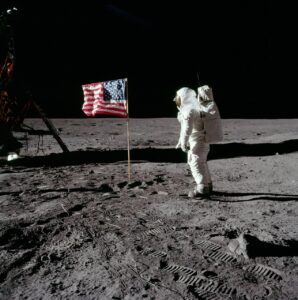Female inventors have played a significant role in U.S. scientific and technological development. However, quite often they did not receive recognition for their accomplishments.
On May 5, 1809, Mary Kies became the first U.S. woman to receive a patent, which was for her technique of weaving straw with silk.
There were women inventors prior to this, but the laws in a multitude of states made it illegal for women to own property. Therefore, a number of women would apply for patents in their husbands’ names.
Although the number of female patent holders has increased fivefold from 1977 to 2016, there’s still a substantial disparity between male and female patent holders. As of 2018, only 10 percent of U.S. patent holders were women, in spite of the fact that women account for half of the doctoral degrees in science and engineering.
Here is a partial list of commonly used inventions created by women:
Circular saw
While working as a weaver in a Shaker community, Tabitha Babbitt saw people laboriously cutting wood with a pit saw, which required two users and only cut in one direction. Determined to find an easier way to cut wood, she attached a circular blade to her spinning wheel, thus inventing the measurably more efficient circular saw.
Computer algorithm
In 1843, while translating the notes of mathematician and computer pioneer Charles Babbage for his theoretical invention called the analytical engine, Ada Lovelace added her own notes, tripling the original text, thus writing the world’s first computer algorithm.
Windshield wiper
Mary Anderson received a patent for her device in 1903 and attempted to sell her new windshield cleaning device to a manufacturer, who told her that the invention had no practical value. Her patent expired without being manufactured. It was 10 years before a comparable device became standard equipment on automobiles.
Antifungal drug
In 1950, microbiologist Elizabeth Lee Hazen, and chemist Rachaek Fuller Brown, while employed by the New York Department of Health, discovered Nystatin, one of the first effective anti-fungal medicines. Long-distance collaboration was made possible by sending samples back and forth via mail.
Car heater
Margaret A. Wilcox, an engineer in Chicago, designed a heater in 1893 that utilized heat from the car’s engine to keep drivers and passengers warm. Engineers later improved heat regulation.
Computer software
A computer scientist named who helped design Harvard’s Mark I Computer also invented a compiler in 1952 that translated written language into computer code. She was also a part of the team that developed COBOL, an early business programming language that is still used today.
Bullet-proof fiber
While searching for strong but lightweight plastics to use in car tires in 1966, DuPont research scientist Stephanie Kwolek discovered what is known as Kevlar. This remarkable fiber is used to make bullet-proof vests. This lightweight, heat-resistant fiber has also become a substitute for asbestos since the 1970s.
Wireless Technology
During World War II, Heddy Lamarr, an iconic movie star, developed frequency-hopping communication for use in torpedo guidance systems. Her pioneering work led to the creation of WiFi, GPS, and Bluetooth.
Life raft
Inventor Maria Beasley, who had already become wealthy from a barrel-hooping machine patent, designed an improved life raft with guard rails that was fireproof and folded for easy storage. Her life rafts used on the Titanic were credited with saving over 700 lives.
The dishwasher
Josephine Cochrane was a socialite who decided to create the dishwasher after she noticed that scrubbing her fine china resulted in chipping.
She settled on a design that utilized water jets and a dish rack to hold the dishes in place. Cochrane constructed the first machine in a shed behind her home, patenting her design in 1886.
She subsequently established Cochran’s Crescent Washing Machine Company and won an award for her design at the Chicago World’s Fair. The first market was restaurants and hotels, however, their domestic use soared in the 1950s.
Cochrane’s company later became KitchenAid, now part of the Whirlpool Corporation.










